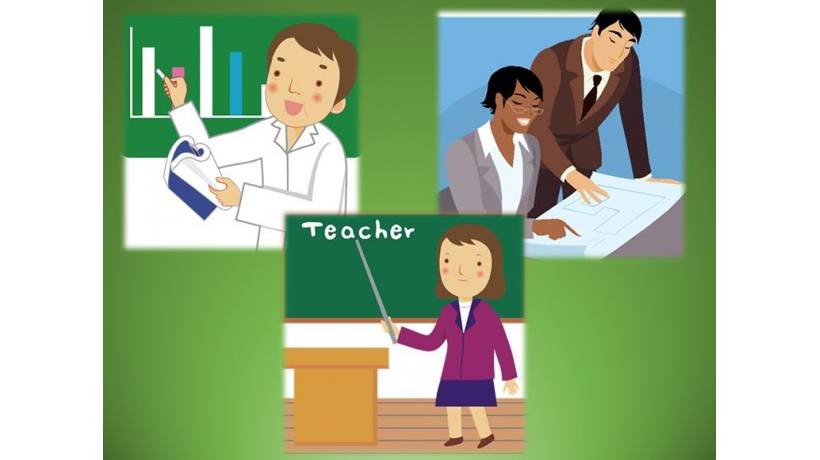Consumer Decision Journey For Learners: The Remaining Stages
This is the second part of our Learner’s Decision Journey that we have set off trying to get the most out of other disciplines that use a similar online environment. Certainly, it is always the beginning that matters only if we keep the end in mind and the same maxim applies for the Learning Decision Journey with its inherent stages that are intertwined and cannot act alone but rather they have to depend on each other. In the remaining stages, teachers continue to explore the digital world of their learners and capitalize on the insights they gained from the previous stages by channeling them in what pushes the teaching-learning experience toward its objectives by making it at the same time a sustainable evergreen process.
The First 3 Stages Of The Learner Decision Journey
We have seen in our previous article (click here if you haven't read it yet) that Consumer Decision Journey is a principle used in e-marketing in which it describes how customers reach the buying decision by going over different stages. Based on that, teachers can adopt this notion and morph it to fit their educational environment, and hence the notion “Learner Decision Journey” is born.
- We have seen that the first of stage Learner Decision Journey is trigger where teachers look for what students need and try sparkle that in what they want.
- The second stage is called initial consideration where we want to build awareness for students and engage them to take more educational steps.
- The third stage is labelled active evaluation where teachers are constantly appraising and evaluating what they’re offering through monitoring and testing.
In the subsequent sections of the article we will explore the remaining stages of Learner Decision Journey.
The Remaining 4 Stages Of The Learner Decision Journey
4. Moment Of Learning Truth
As marketers aim at this stage to improve the sales process, teachers should aim at improving the learning outcomes. Here we’re looking at the fruits of our learning experience we have designed and the outputs it has produced so far. A caveat to avoid is that the twilight of success and failure should never urge you to rush to a judgement, but rather it should provide you with a snapshot of the current state of affair. Therefore, you should not sit at the laurels of your achievement, but rather roll up again your sleeves and look for what caused this and that.
Marketers at this phase conduct an outcome analysis to gain more insights so they can easily segment their customers. Teachers also can segment their learners according to the competence they have acquired and what they seem to be struggling with. With this, teachers are encouraged to design personalized learning experiences for each learner based on their performance, and prepare them for a mixed ability classroom where the environment with different mastery level of the subject under study is provided. This requires the teacher to spend some efforts trying to adapt to students’ inherent characteristics.
5. Post-Learning Experience
After the moment of learning truth, teachers now should reflect on their journey with their learners by conducting necessary assessment and evaluation as well as appraisals. Also, it’s important to give voice for students to express their concerns and their success either through surveys, focus groups, online video conferences synchronously or asynchronously.
This will help the teacher to measure the extent of whether the learning experience they created for their learners has met their expectations and the learning outcomes, or more reworking and adaptation is needed. It would be a welcome approach for teachers to separate the wheat from the chaff of their efforts. When students advocate, talk, and promote your learning experience, this stands as a positive sign that they have got something out of what you have designed and they deem it useful in their real and digital world. Their feelings and impressions about the course is not an easy thing to measure since it’s a qualitative data, however, there are some quantitative metrics that you may adopt as a beginning till your skin gets thicker enough to measure what you need.
As a teacher, your gift is when you see your students applying what they have learned in real life situations which is a sign that they both learned and acquired the concepts you’ve been working on with them. Yet, seeing them still unsure where to use it or at least how to showcase it to their realities maybe a signal that you failed fast and you need to get quickly and fail better.
6. Switch
For marketers, the journey for their consumers is to keep them in the loyalty loop hoping that they will shortcut their journey without going through initial consideration and active evaluation and even by being evangelists of the product they have bought.
However, for teachers, the aim is to help students transcend that loop to another journey with different parameters and variables. After students reach positive learning experience and when they’re armed with new skills and attitudes, they are ready to take on new learning challenges that should be a little above their learning scope. In this regard, Stephen Krashen, in his famous Input Theory hypothesis, states that learners should receive content that is just beyond their actual understanding in a theory he calls it ‘i+1’. Switch stage should move students to a new trigger of a Learner Decision Journey that they can tackle with guidance of the teacher. Lev Vygotsky also calls it the Zone of Proximal Development (ZPD) and as for our case we may call it zero zone of proximal development because students are in a standby mode to receive new learning input and trigger.
Remember that your learning experience, even though a masterpiece that addresses real life problems, full of ins and outs, will have no meaning if:
Students cannot see its usefulness. You choose wrong techniques to deliver the content of your learning experience.
7. eTrigger
This is an extra stage in our Learner Decision Journey that is not found in the original model Consumer Decision Journey and it is at the same time different from the first trigger in some points. It’s a trigger that is endorsed with prior knowledge gained from a previous Learner Decision Journey cycle passed by students. In this regard, the teacher should conceptualize and design strategies for this trigger by including the outcomes of the previous Learner Decision Journey s/he spent with students. If we want to represent it mathematically, Trigger can be something like eTrigger= triggerN, where N represents the number of Learner Decision Journeys that precede it.
Wrap-up
In the last two articles, I tried to adapt Consumer Decision Journey used by marketers for the benefits of teachers reminding them that they should harness the power of the social capital surrounding them from experts in other disciplines. It is always wonderful to see a teacher learn from a marketer, an engineer, a programmer, and so on down the list. Learning should be a journey that revolves around oriented fun where learners enjoy the wonder of the digital hubs they spend their times on. As real journeys, this journey is full of twists and challenges, but it’s a journey that’s worth taking and trying. Certainly, this is not one stop solution or panacea of potential challenges, and I would be glad to hear your feedback on how to improve it.









